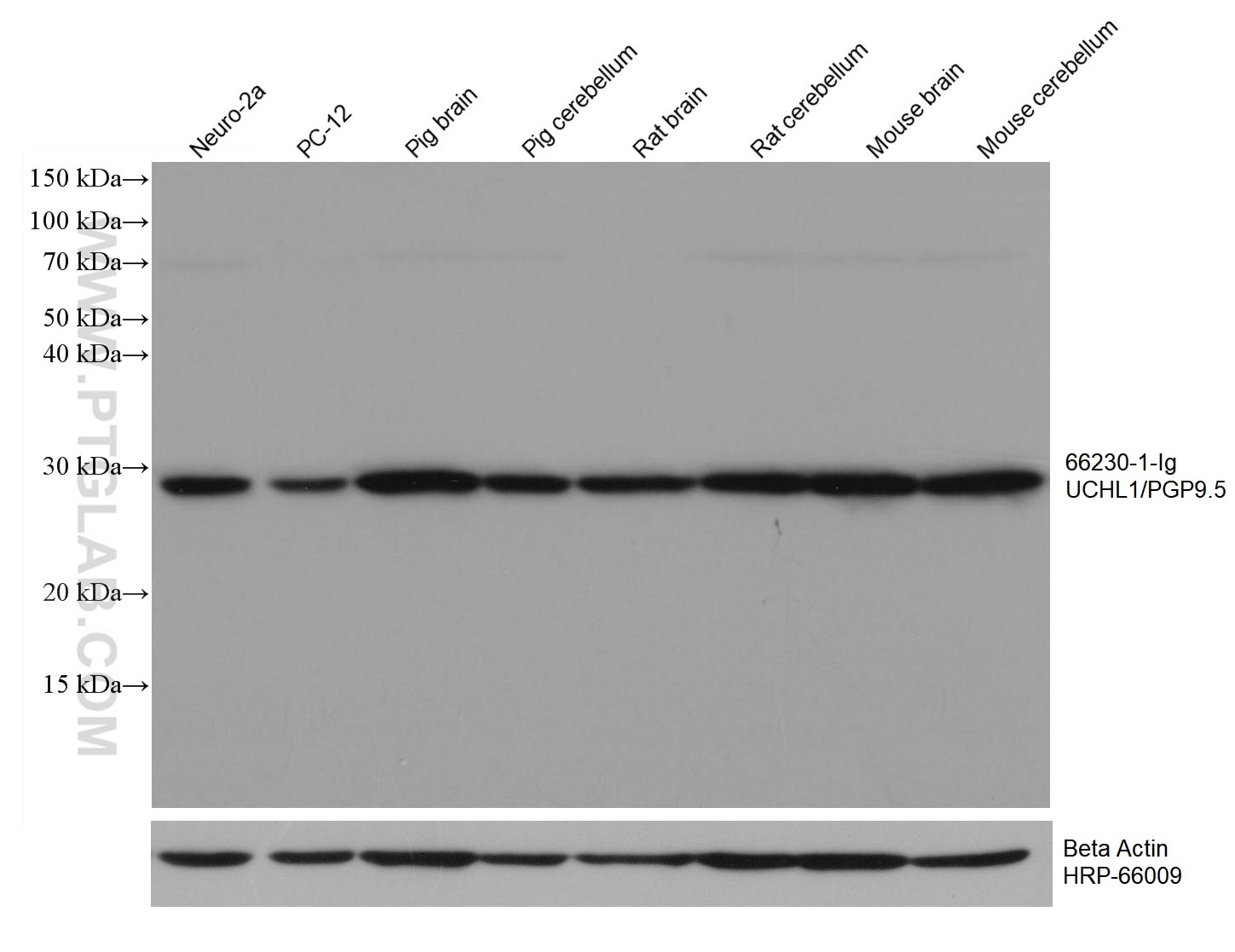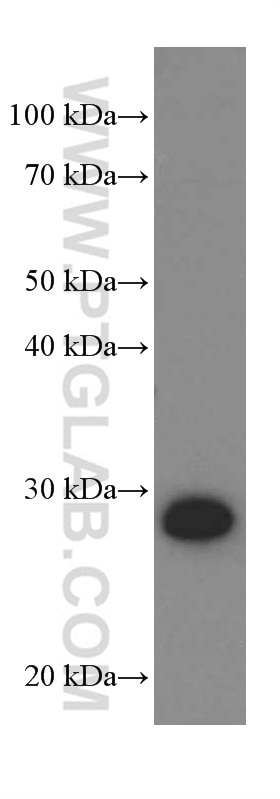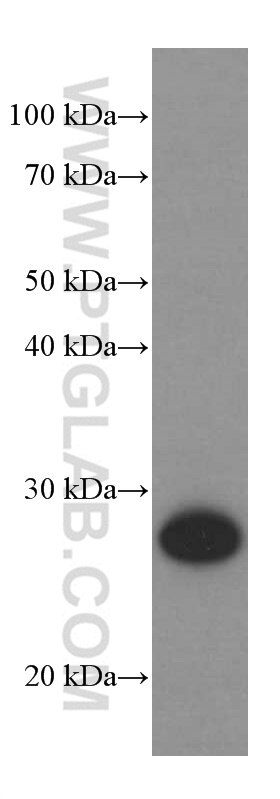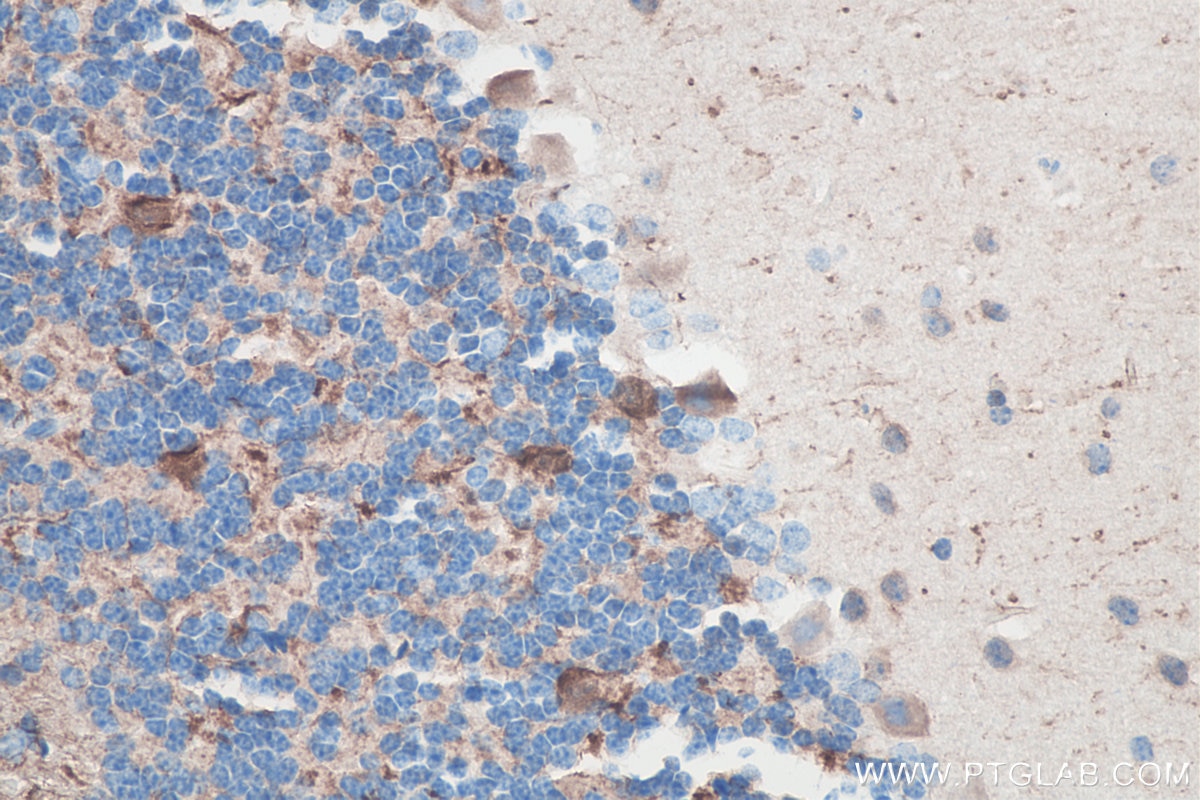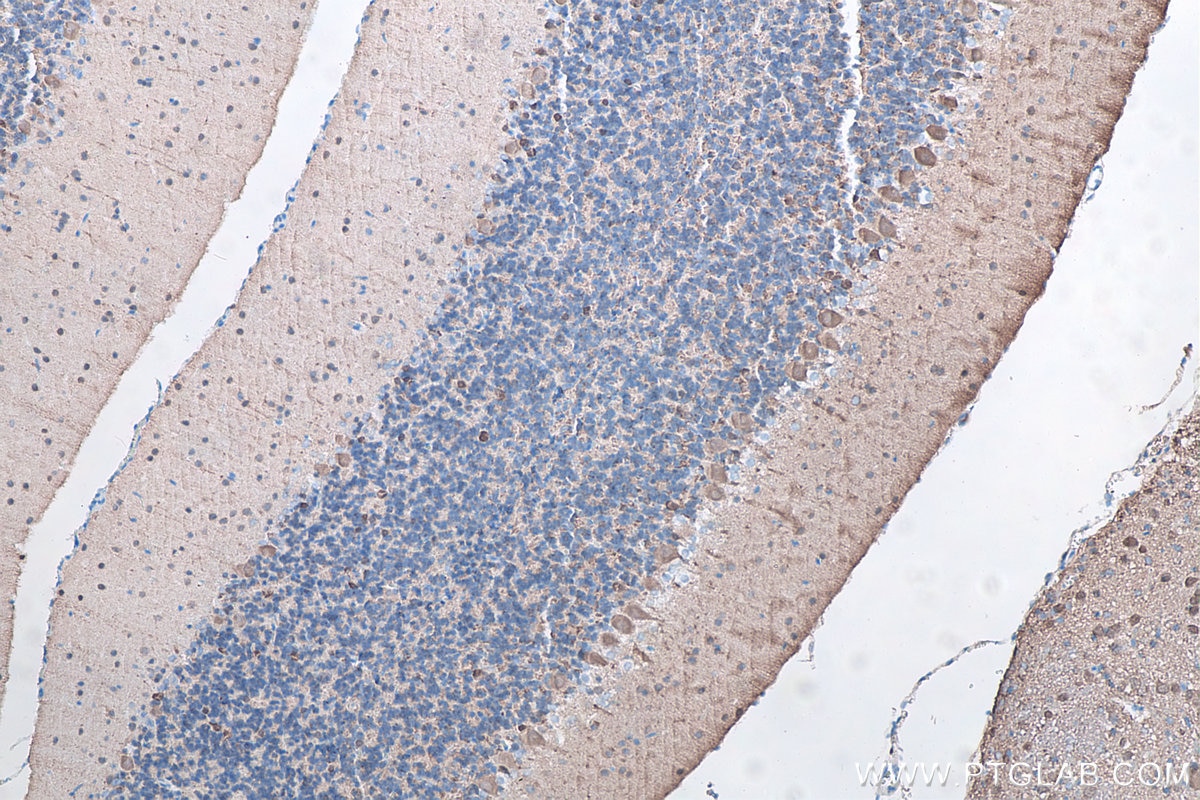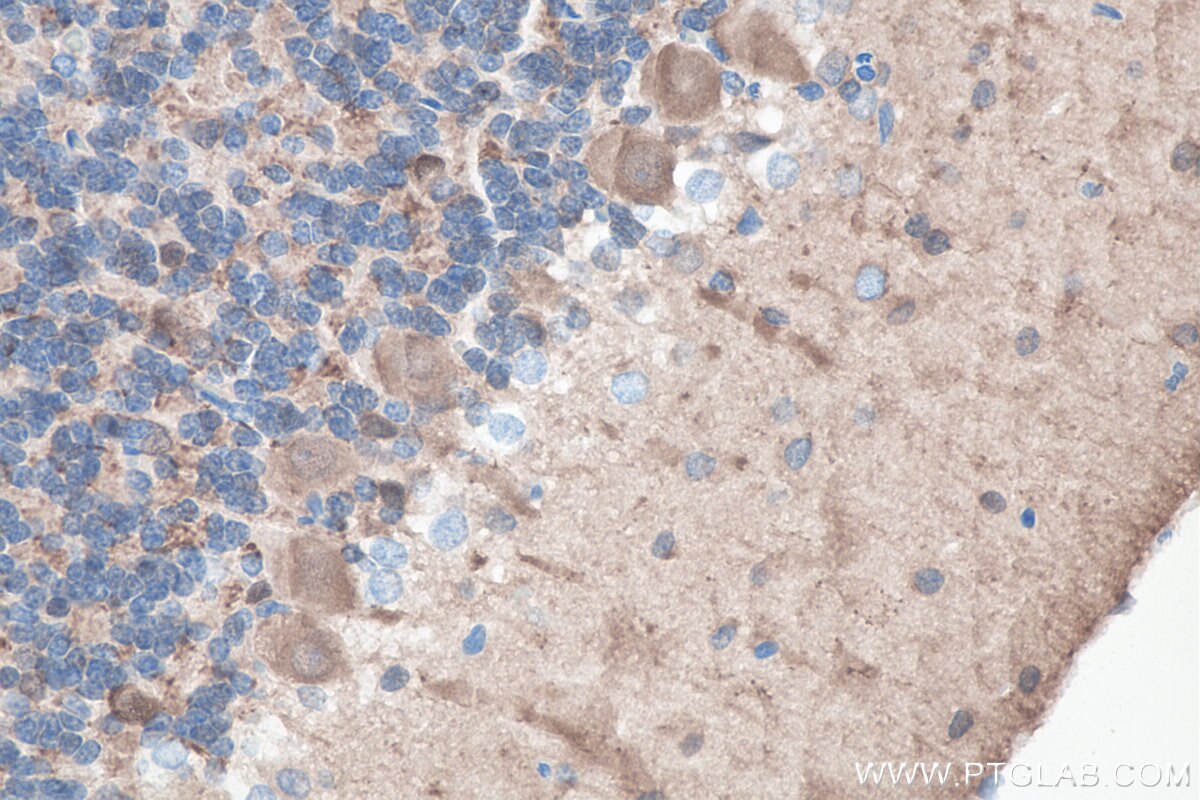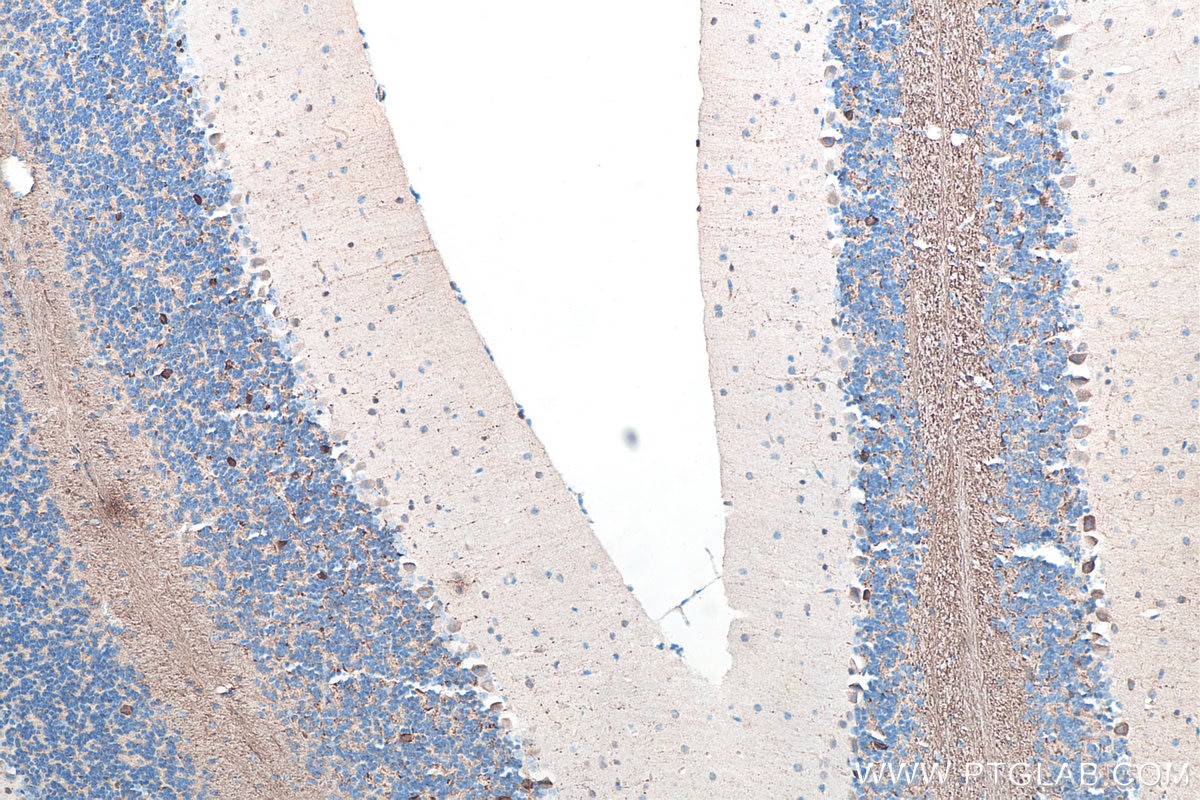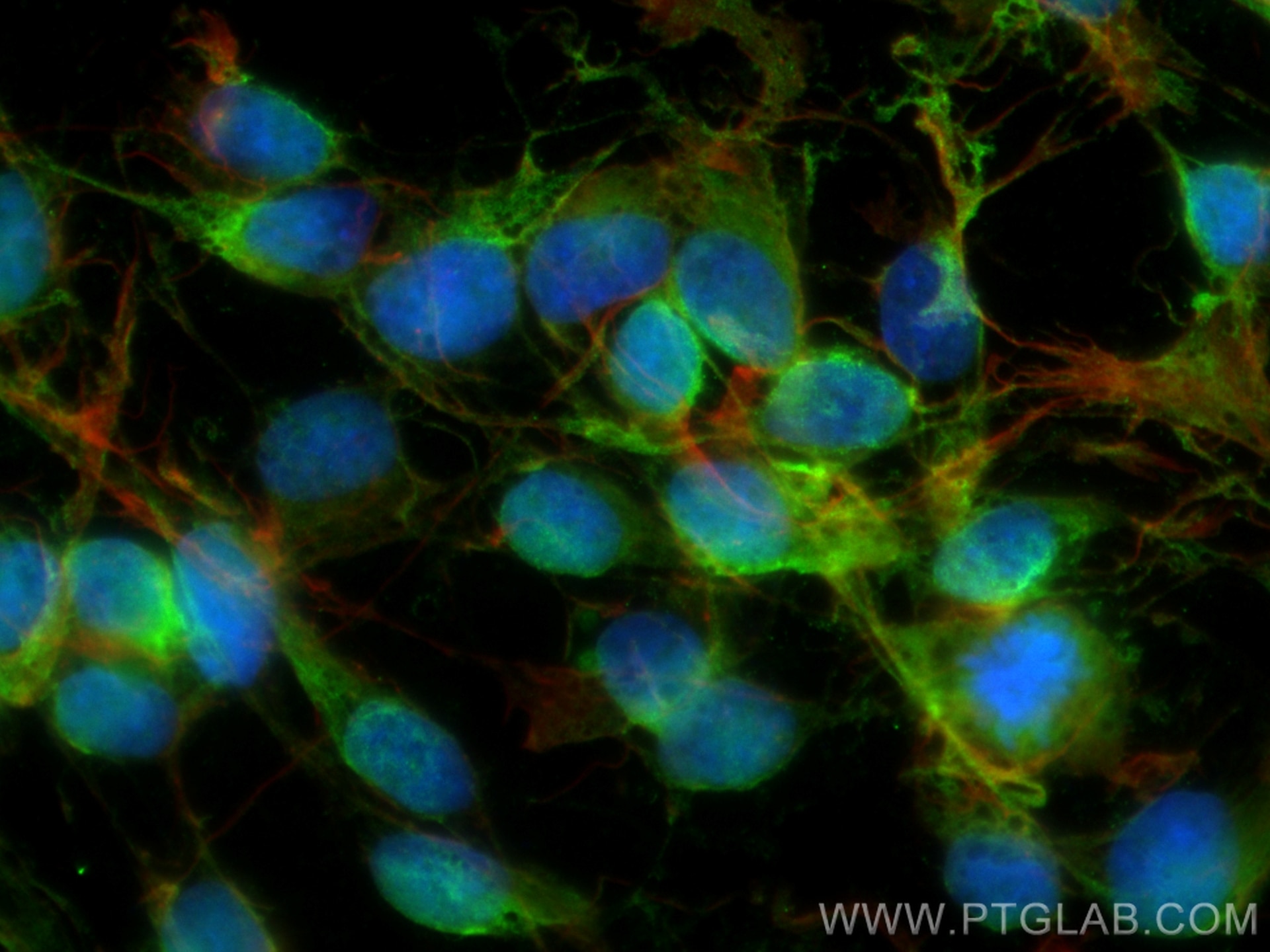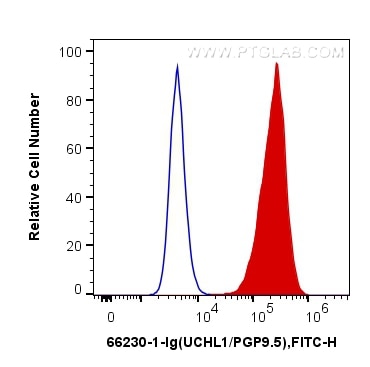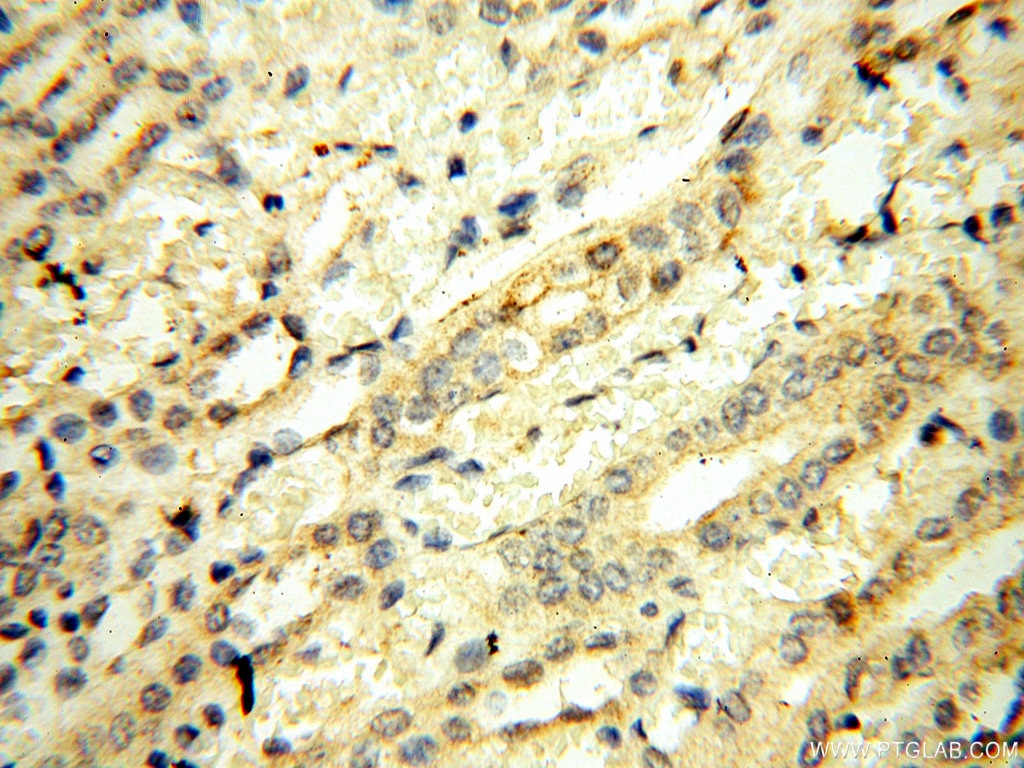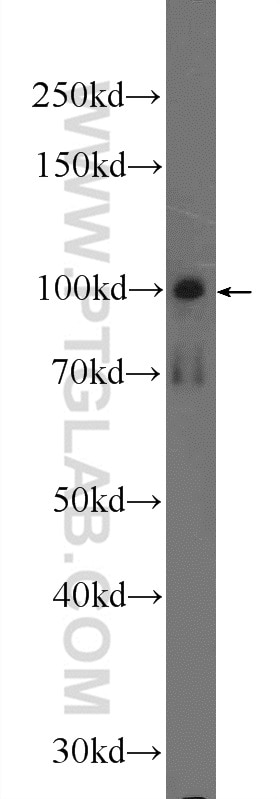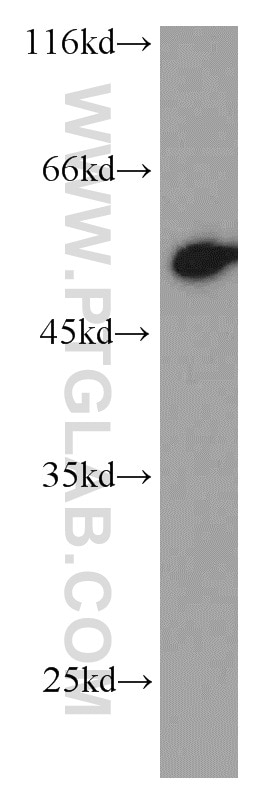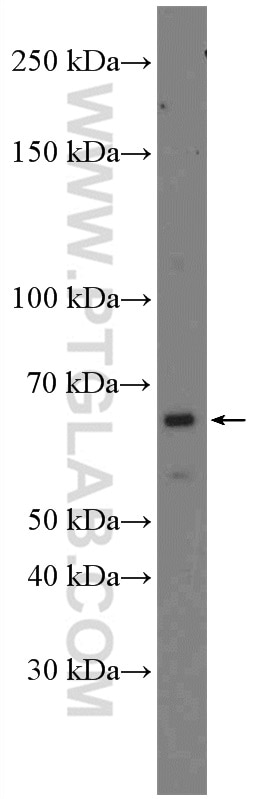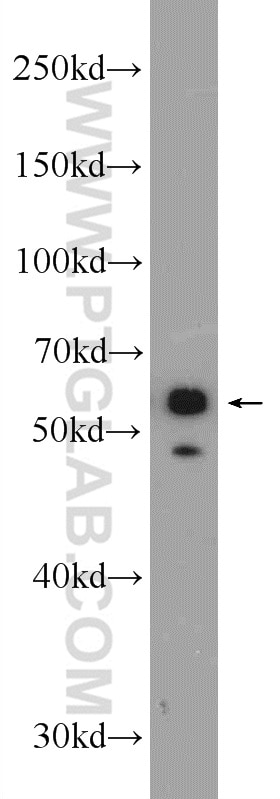- Featured Product
- KD/KO Validated
UCHL1/PGP9.5 Monoklonaler Antikörper
UCHL1/PGP9.5 Monoklonal Antikörper für FC, IF, IHC, WB, ELISA
Wirt / Isotyp
Maus / IgG1
Getestete Reaktivität
Hausschwein, human, Maus, Ratte
Anwendung
WB, IHC, IF, FC, ELISA
Konjugation
Unkonjugiert
CloneNo.
1C9E11
Kat-Nr. : 66230-1-Ig
Synonyme
Galerie der Validierungsdaten
Geprüfte Anwendungen
| Erfolgreiche Detektion in WB | Neuro-2a-Zellen, Hausschwein-Cerebellum-Gewebe, Hausschwein-Hirngewebe, Maus-Cerebellum-Gewebe, Maushirngewebe, PC-12-Zellen, Ratten-Cerebellum-Gewebe, Rattenhirngewebe, Y79-Zellen |
| Erfolgreiche Detektion in IHC | Maus-Cerebellum-Gewebe, Ratten-Cerebellum-Gewebe Hinweis: Antigendemaskierung mit TE-Puffer pH 9,0 empfohlen. (*) Wahlweise kann die Antigendemaskierung auch mit Citratpuffer pH 6,0 erfolgen. |
| Erfolgreiche Detektion in IF | SH-SY5Y-Zellen |
| Erfolgreiche Detektion in FC | Y79-Zellen |
Empfohlene Verdünnung
| Anwendung | Verdünnung |
|---|---|
| Western Blot (WB) | WB : 1:20000-1:100000 |
| Immunhistochemie (IHC) | IHC : 1:4000-1:16000 |
| Immunfluoreszenz (IF) | IF : 1:200-1:800 |
| Durchflusszytometrie (FC) | FC : 0.20 ug per 10^6 cells in a 100 µl suspension |
| It is recommended that this reagent should be titrated in each testing system to obtain optimal results. | |
| Sample-dependent, check data in validation data gallery | |
Veröffentlichte Anwendungen
| KD/KO | See 1 publications below |
| WB | See 3 publications below |
| IHC | See 1 publications below |
| IF | See 3 publications below |
Produktinformation
66230-1-Ig bindet in WB, IHC, IF, FC, ELISA UCHL1/PGP9.5 und zeigt Reaktivität mit Hausschwein, human, Maus, Ratten
| Getestete Reaktivität | Hausschwein, human, Maus, Ratte |
| In Publikationen genannte Reaktivität | human, Hausschwein, Maus, Ratte |
| Wirt / Isotyp | Maus / IgG1 |
| Klonalität | Monoklonal |
| Typ | Antikörper |
| Immunogen | UCHL1/PGP9.5 fusion protein Ag6547 |
| Vollständiger Name | ubiquitin carboxyl-terminal esterase L1 (ubiquitin thiolesterase) |
| Berechnetes Molekulargewicht | 25 kDa |
| Beobachtetes Molekulargewicht | 27 kDa |
| GenBank-Zugangsnummer | BC000332 |
| Gene symbol | UCHL1 |
| Gene ID (NCBI) | 7345 |
| Konjugation | Unkonjugiert |
| Form | Liquid |
| Reinigungsmethode | Protein-A-Reinigung |
| Lagerungspuffer | PBS mit 0.02% Natriumazid und 50% Glycerin pH 7.3. |
| Lagerungsbedingungen | Bei -20°C lagern. Nach dem Versand ein Jahr lang stabil Aliquotieren ist bei -20oC Lagerung nicht notwendig. 20ul Größen enthalten 0,1% BSA. |
Hintergrundinformationen
Ubiquitin C-terminal hydrolase L1 (UCHL1) was originally identified as a neuronal protein that accounts for nearly 2% of total brain proteins. UCHL1 activity protects neurons from hypoxic injury, and binding of stroke-induced reactive lipid species to the cysteine 152 (C152) of UCHL1 unfolds the protein and disrupts its function. Reduced hydrolytic activity of mutant UCHL1 is implicated in the pathophysiologic process of Parkinson's and Alzheimer's disease due to abnormal neurotoxic protein aggregation. (PMID: 31356902, PMID: 30760601)
Protokolle
| Produktspezifische Protokolle | |
|---|---|
| WB protocol for UCHL1/PGP9.5 antibody 66230-1-Ig | Protokoll herunterladen |
| IHC protocol for UCHL1/PGP9.5 antibody 66230-1-Ig | Protokoll herunterladen |
| IF protocol for UCHL1/PGP9.5 antibody 66230-1-Ig | Protokoll herunterladen |
| FC protocol for UCHL1/PGP9.5 antibody 66230-1-Ig | Protokoll herunterladen |
| Standard-Protokolle | |
|---|---|
| Klicken Sie hier, um unsere Standardprotokolle anzuzeigen |
Publikationen
| Species | Application | Title |
|---|---|---|
Theranostics UCH-L1-mediated Down-regulation of Estrogen Receptor α Contributes to Insensitivity to Endocrine Therapy for Breast Cancer.
| ||
Dig Dis Sci P2Y1, P2Y2, and TRPV1 Receptors Are Increased in Diarrhea-Predominant Irritable Bowel Syndrome and P2Y2 Correlates with Abdominal Pain. | ||
Reprod Domest Anim Isolation and in vitro expansion of porcine spermatogonial stem cells. | ||
ORL J Otorhinolaryngol Relat Spec Role of the Ubiquitin C-Terminal Hydrolase L1-Modulated Ubiquitin Proteasome System in Auditory Cortex Senescence. | ||
Discov Oncol Oxaliplatin-induced peripheral neuropathy can be minimized by pressurized regional intravascular delivery in an orthotopic murine pancreatic cancer model. | ||
PLoS Biol The RSK2-RPS6 axis promotes axonal regeneration in the peripheral and central nervous systems |
